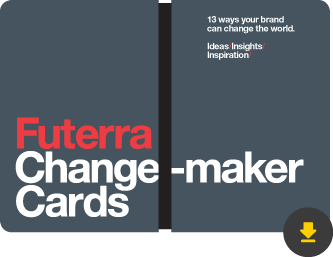Step 1
Right behavior
The business case for ‘upstream’ sustainability is becoming widely accepted. Changing consumer behaviors ‘downstream’ has become popular, but the ROI is murky. This means many sustainable lifestyle initiatives stay in ‘pilot purgatory’ and never reach scale.
In 2013, we surveyed over 50 companies about sustainable lifestyles. The majority expect sustainable lifestyles will deliver growth, innovation and sales within five years. They also said the biggest barrier holding them back was the lack of a business case.
That’s why we’ve made this Business Case Builder.
Target the right behavior
First you need to find the area of consumer behavior with the most significant sustainability impact by:
- Identifying your business’ most significant impacts on society and the environment. Traditionally identified through a materiality process.
- Determining the role consumers play in that. Find this through a lifecycle assessment.
Identifying the right behavior won’t always be straightforward - complications and conflicts will arise. For example, packaging waste might be a relatively small part of your overall footprint, but a hugely visible problem for consumers.
You might choose your target behavior based on consumer perception, stakeholder importance or for competitive differentiation. All those are valid motivations, and should be stated upfront in your business case.
This BETA version has four broad behavioral areas; with your help we can add more.
“Only 38% of CEOs
feel that they are
currently able to
accurately quantify the
business value of their
sustainability initiatives.”
UN Global Compact
Accenture CEO Study
on Sustainability 2013





